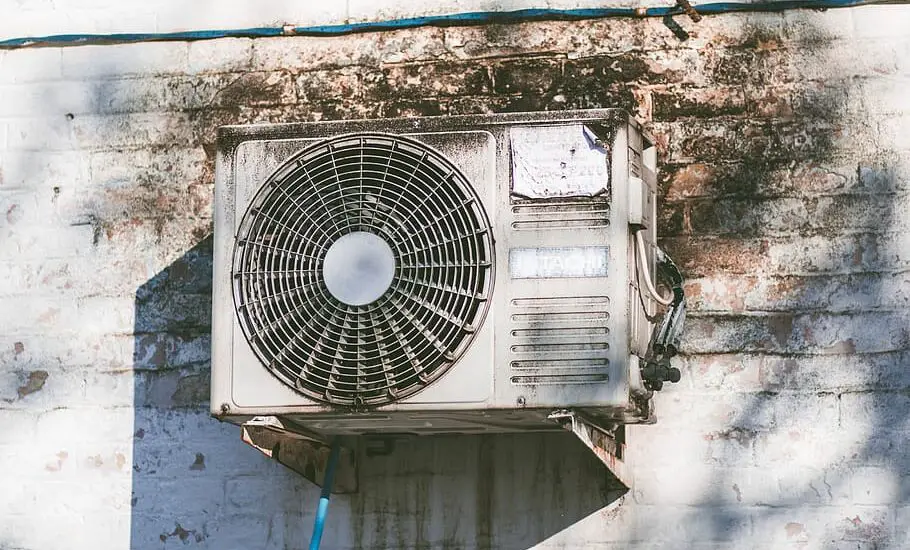You know the pain when your AC seems to be blowing more hot air than cold, right? That could be the dirty condenser coil symptoms creeping in! In this piece, we’re going to discuss the dirty condenser coil symptoms you’ll likely experience, and how to clean it up.

Table of Contents
What Happens When the Condenser Coil Gets Dirty
Imagine running a marathon with a heavy backpack. Sounds exhausting, doesn’t it? A similar thing happens when your condenser coil gets dirty. The dirt acts like a blanket, trapping the heat and making the coil work harder to cool down. That’s bad news for your comfort and even worse for your system’s health!
Dirty Condenser Coil Symptoms
Now, let’s dive into the telltale signs of a dirty condenser coil. Because trust us, your HVAC system will definitely cry out for help if its coil is covered in grime.
Reduced Cooling Efficiency
Think of your HVAC as an athlete. If it’s in top shape, it will deliver peak performance. But if it’s weighed down by dirt, it’s going to falter. That translates into poor cooling efficiency, meaning your rooms might feel more like a mild sauna than a cool haven.
Higher Energy Bills
When your condenser coil is dirty, your HVAC has to work harder, just like the marathon runner we mentioned earlier. And guess what that means for your energy bills? Yep, they’re going sky-high!
Overheating and System Breakdowns
Dirt buildup on your condenser coil can lead to overheating. Just as an overheated car engine can spell disaster, the same goes for your HVAC system. It could cause severe damage, forcing you to call in the repair team or even replace the entire unit.
Check out these other related articles…
Condenser Pressure in Refrigeration System: Ultimate Guide
Condenser HVAC: Detailed Guide to its Role & Maintenance
Condenser in Refrigerator: Your Comprehensive 411 Guide
Condenser Refrigeration: Your Ultimate 101 Guide
What Does a Condenser Do? Comprehensive Answer
Will a Dirty Condenser Coil Cause Freezing?
Could your dirty condenser coil turn your HVAC into an ice machine? Let’s find out.
Causes of Freezing in HVAC Systems
A lot of things can cause your HVAC system to freeze. A dirty air filter, low refrigerant, and yes, a dirty condenser coil can all be culprits. That’s because they all prevent the system from effectively dissipating heat, leading to an ice buildup.
The Impact of a Dirty Coil on Freezing
A dirty condenser coil can certainly contribute to your system freezing. It’s like trying to cool a hot drink by blowing on it with a warm breath. Not gonna work, right? Similarly, if the coil can’t shed its heat effectively because of the dirt, it can lead to freezing in the system.
How to Clean Dirty Condenser Coils
Alright, enough with the problems. Let’s talk about solutions! How can we clean these dirty condenser coils?
When to Clean Your Condenser Coils
As a general rule of thumb, you should clean your condenser coils once a year. However, if you live in a dusty area or use your system heavily, you might need to clean it more often.
Steps to Clean a Dirty Condenser Coil
Now for the part you’ve been waiting for. The actual cleaning process. And no, it’s not rocket science!
Safety Precautions Before Starting
Before you start, remember, safety first! Always switch off the power to your HVAC system before you start fiddling around with it. You don’t want any nasty surprises, do you?
Necessary Cleaning Tools and Supplies
You’ll need a few basic tools for the job: a soft brush, a fin comb, a coil cleaner, and a water hose. Not exactly stuff you’d find in a high-tech lab, right?
Detailed Cleaning Procedure
Start by gently brushing off loose debris with your soft brush. Then spray the coil with the coil cleaner and let it sit for a few minutes. Rinse it off with the water hose, comb the fins back into shape if they’re bent, and voila! You’ve got yourself a clean condenser coil.
